Abstract
Quantum yields were measured for CO2 fixation by sunflower (Helianthus annuus L.) leaves having various water potentials and for dichlorophenolindophenol photoreduction by chloroplasts isolated from similar leaves having various water potentials. In red radiation, the quantum yield for CO2 was 0.076 for an attached sunflower leaf at a water potential of −3 to −4 bars but was 0.020 for the same leaf at −15.3 bars. After recovery to a water potential of −5 bars, the quantum yield rose to 0.060. Soybean (Glycine max L. [Merr.]) leaves behaved similarly. Chloroplasts from a sunflower leaf with a water potential of −3.6 bars had a quantum yield for 4 equivalents of 0.079, but when tissue from the same leaf had a water potential of −14.8 bars, the quantum yield of the chloroplasts decreased to 0.028. The decrease could not be attributed to differences in rates of respiration by the leaves or the chlorophyll content or absorption spectrum of the leaves and chloroplasts.
The data are the first to demonstrate an effect of low leaf water potential on the quantum yield and they indicate that changes occurred close to the primary photochemical events of photosynthesis. The similarity in response of the leaves and chloroplasts indicates that certain changes in photosynthesis at low water potentials are attributable to the chloroplasts rather than the stomata.
Full text
PDF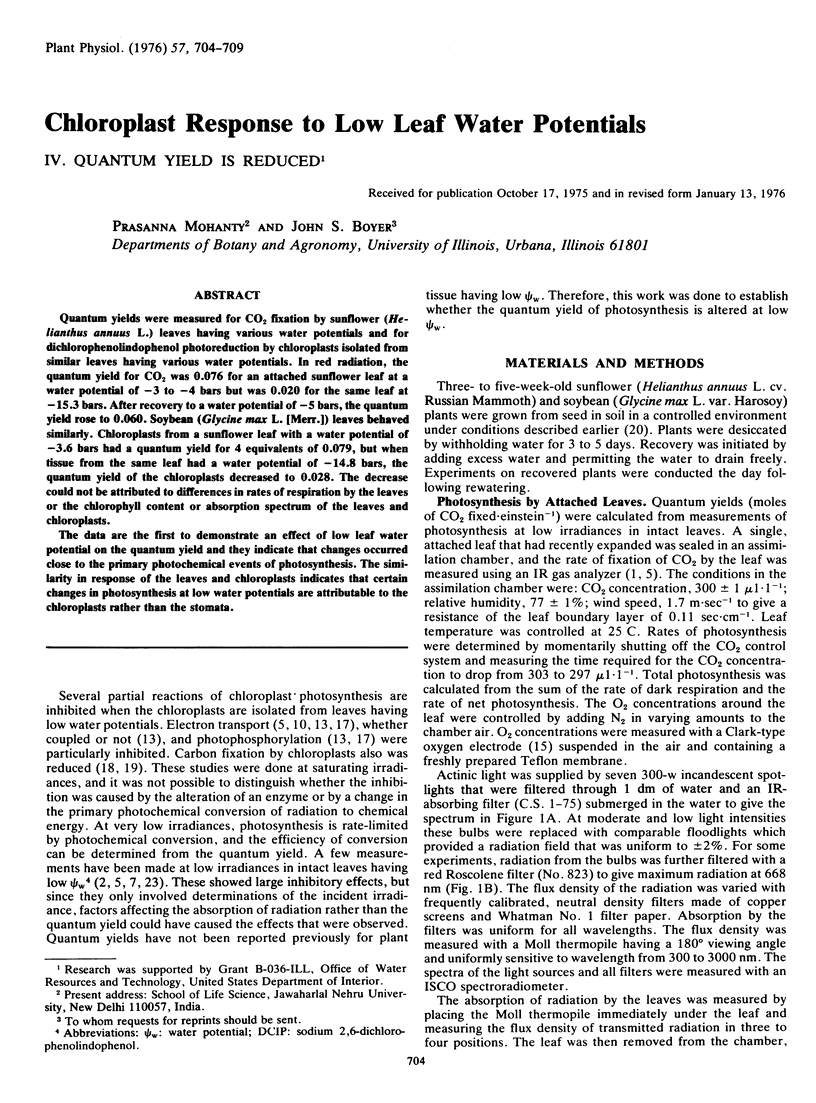
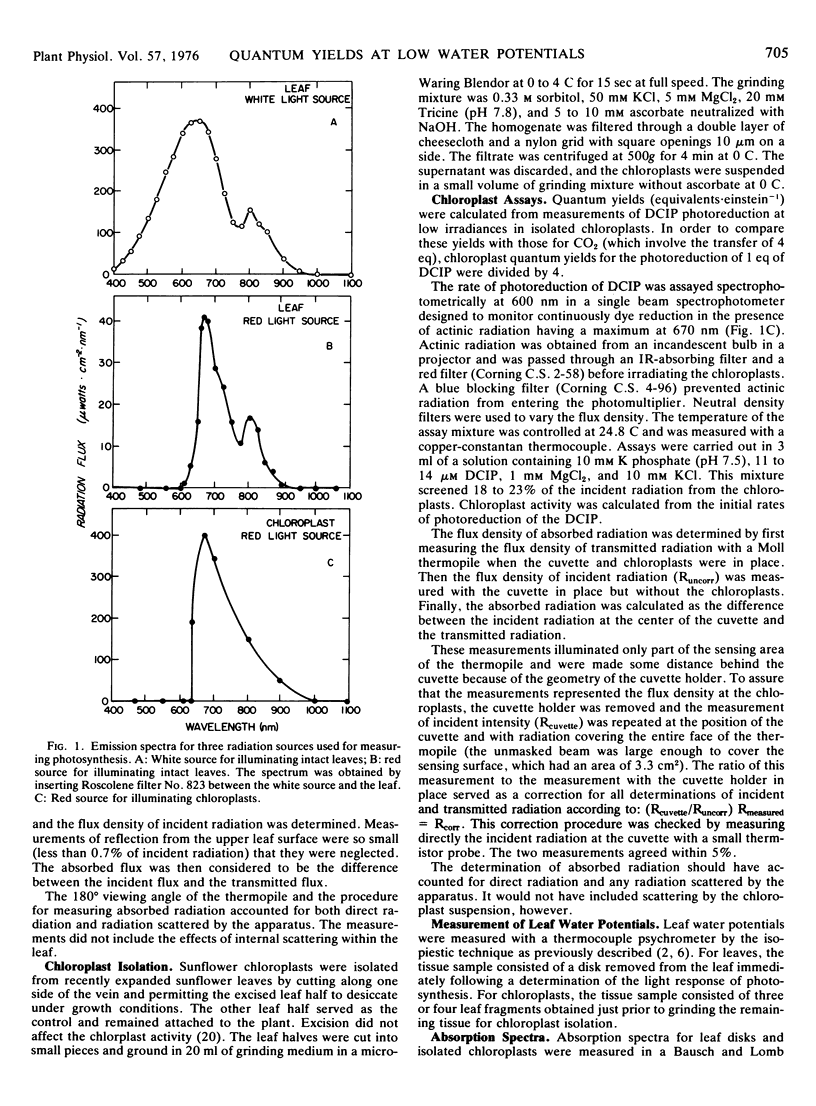
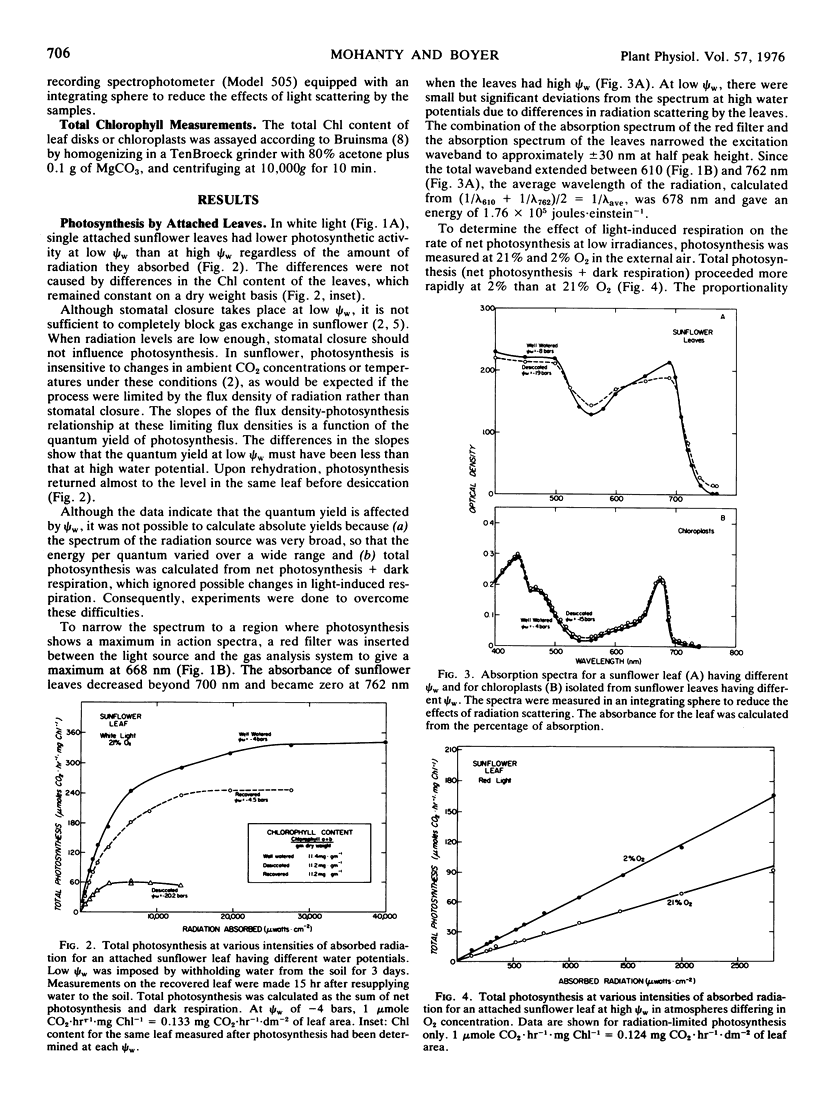
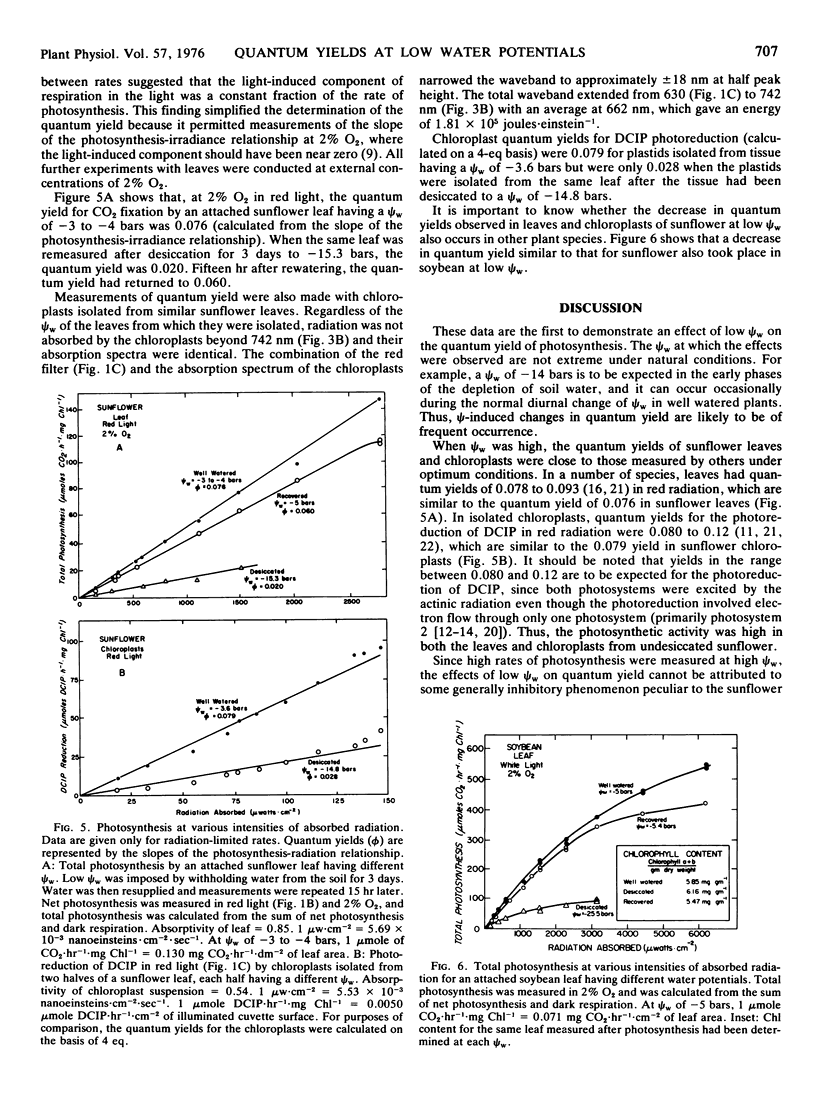
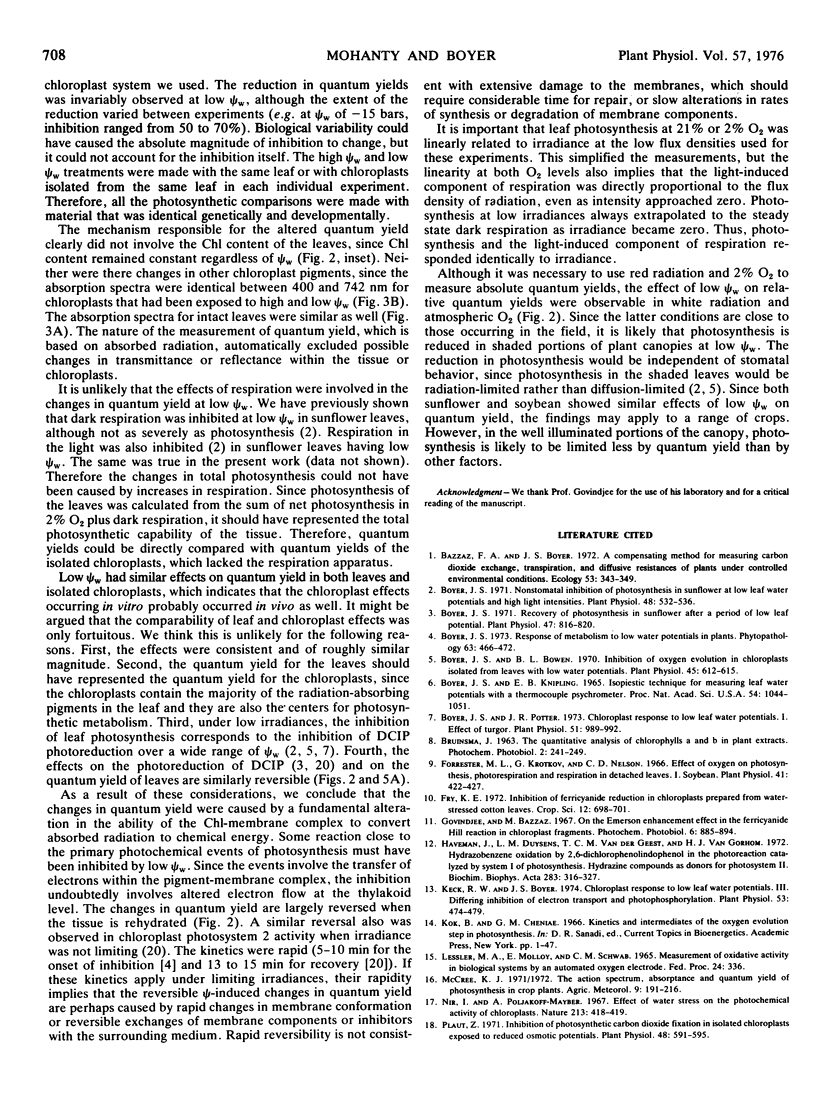
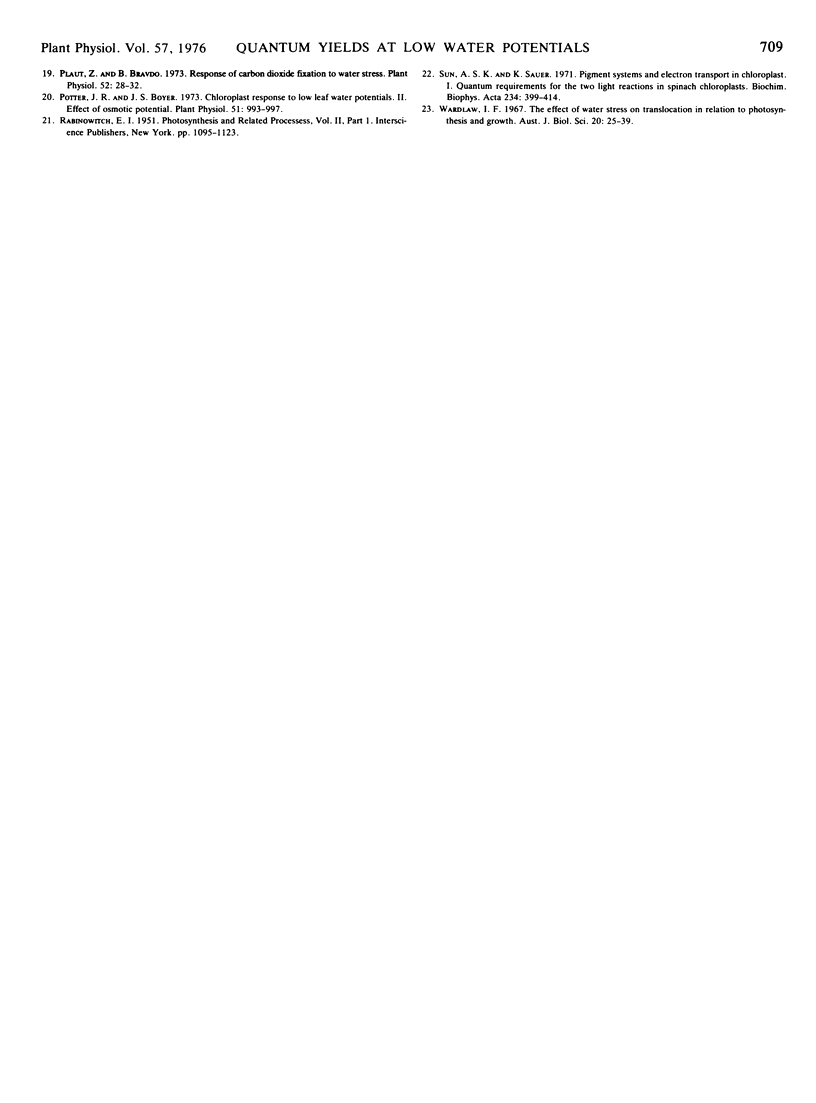
Selected References
These references are in PubMed. This may not be the complete list of references from this article.
- Boyer J. S., Bowen B. L. Inhibition of oxygen evolution in chloroplasts isolated from leaves with low water potentials. Plant Physiol. 1970 May;45(5):612–615. doi: 10.1104/pp.45.5.612. [DOI] [PMC free article] [PubMed] [Google Scholar]
- Boyer J. S. Nonstomatal inhibition of photosynthesis in sunflower at low leaf water potentials and high light intensities. Plant Physiol. 1971 Nov;48(5):532–536. doi: 10.1104/pp.48.5.532. [DOI] [PMC free article] [PubMed] [Google Scholar]
- Boyer J. S., Potter J. R. Chloroplast response to low leaf water potentials: I. Role of turgor. Plant Physiol. 1973 Jun;51(6):989–992. doi: 10.1104/pp.51.6.989. [DOI] [PMC free article] [PubMed] [Google Scholar]
- Boyer J. S. Recovery of photosynthesis in sunflower after a period of low leaf water potential. Plant Physiol. 1971 Jun;47(6):816–820. doi: 10.1104/pp.47.6.816. [DOI] [PMC free article] [PubMed] [Google Scholar]
- Forrester M. L., Krotkov G., Nelson C. D. Effect of oxygen on photosynthesis, photorespiration and respiration in detached leaves. I. Soybean. Plant Physiol. 1966 Mar;41(3):422–427. doi: 10.1104/pp.41.3.422. [DOI] [PMC free article] [PubMed] [Google Scholar]
- Haveman J., Duysens L. N., Geest T. C., van Gorkom H. J. Hydrazobenzene oxidation by 2,6-dichlorophenol-indophenol in a photoreaction catalyzed by system I of photosynthesis. Hydrazine compounds as donors for photosystem II. Biochim Biophys Acta. 1972 Nov 17;283(2):316–327. doi: 10.1016/0005-2728(72)90247-2. [DOI] [PubMed] [Google Scholar]
- Keck R. W., Boyer J. S. Chloroplast Response to Low Leaf Water Potentials: III. Differing Inhibition of Electron Transport and Photophosphorylation. Plant Physiol. 1974 Mar;53(3):474–479. doi: 10.1104/pp.53.3.474. [DOI] [PMC free article] [PubMed] [Google Scholar]
- Twente J. W., Twente J. A. Regulation of hibernating periods by temperature. Proc Natl Acad Sci U S A. 1965 Oct;54(4):1044–1051. [PMC free article] [PubMed] [Google Scholar]


